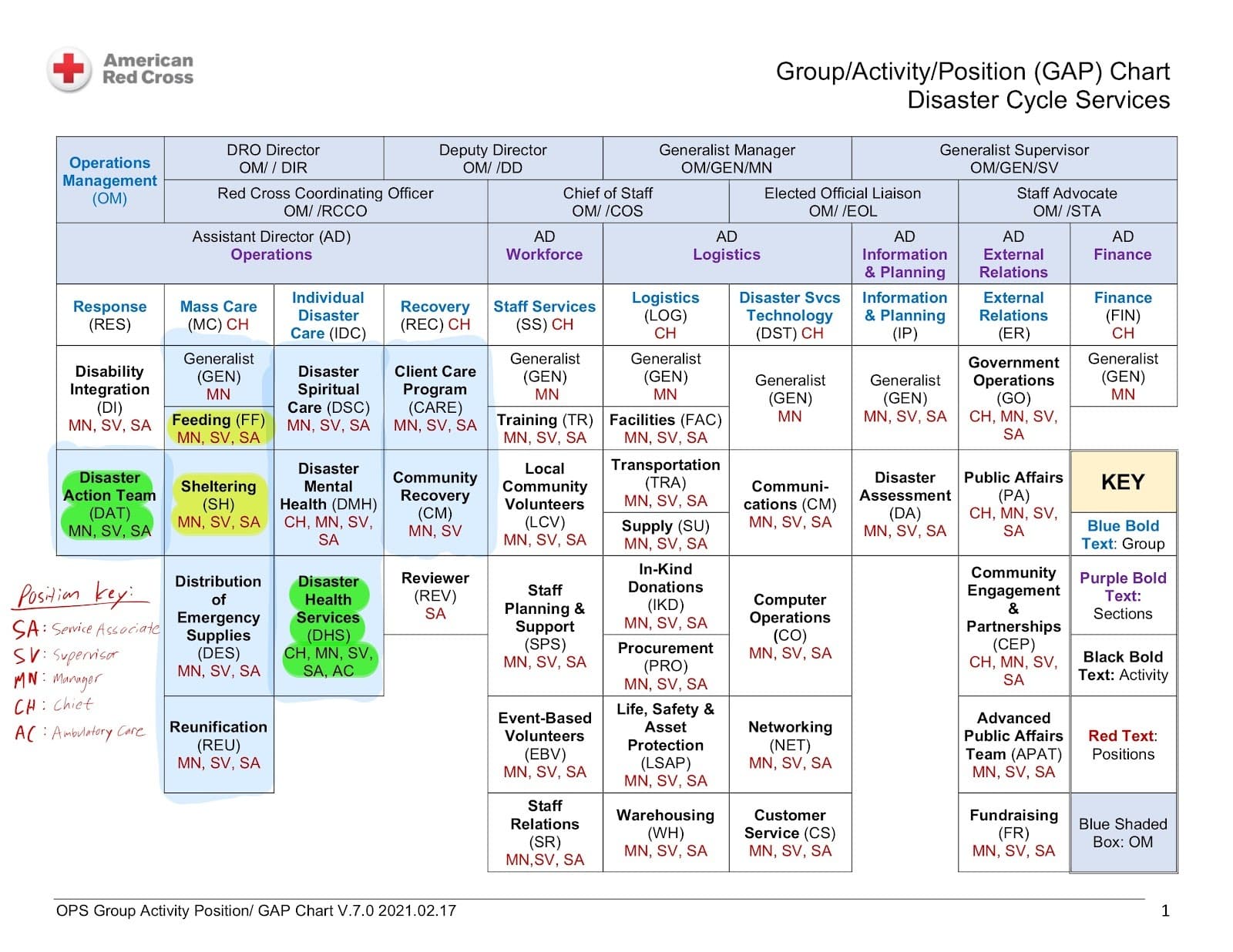Start with shelter + feeding
These GAPs explain shelter layouts, meal distribution, and daily rhythms. After you master them, it is easier to cross-train into logistics, health services, or client care.
Preparing your session…
Deployments
To join Disaster Cycle Services you will complete online GAP (Group, Activity, Position) training. Sheltering and Feeding GAPs are the best starting point because they teach how Red Cross shelters operate and how every team collaborates.
Most first-time responders begin as Service Associates (SAs) who support daily operations. If you hold credentials like EMT, CNA, MA, or Phlebotomy, you can build toward Disaster Action Team or Disaster Health Services roles after your core GAPs are finished.
Start with shelter + feeding
These GAPs explain shelter layouts, meal distribution, and daily rhythms. After you master them, it is easier to cross-train into logistics, health services, or client care.
Have credentials already?
Let recruiters know about EMT, CNA, MA, or Phlebotomy licenses so they can queue Disaster Action Team or Disaster Health Services training after your core GAPs.
Deployments are two-week assignments in another county, region, or state once local needs outpace local responders. You will keep working within the GAP you trained for, whether that is sheltering, feeding, logistics, or client care.
Follow this path to move from club member to deployable volunteer.
Follow the national onboarding instructions to set up your volunteer profile and sign all agreements.
View membership steps →Review the GAP chart (Figure 1) and pick the Group, Activity, and Position that fits your interests or credentials.
Send micaela.duarte@redcross.org your intended GAP and copy christin.newlon@redcross.org so the Cal Poly coordinator is updated.
A phone interview confirms your goals. The recruiter then loads required training into Volunteer Connection and EDGE.
Figure 1
Align your interests with the right Group, Activity, and Position before you request training.

Listed in blue across the top of the chart. Each group covers a response pillar such as Sheltering, Feeding, Logistics, or Health Services.
Printed in black beneath each group. They describe the functional lane (e.g., mass care feeding or client casework).
Shown in red under each activity. Service Associate (SA) is the starting role for most volunteers before promoting.
Light blue = client-facing, yellow = first-time volunteer priorities, green = best for volunteers with health licenses.
Access EDGE through Volunteer Connection so coursework logs to your profile automatically.
Manually log contacts, interviews, club events, and deployments in Volunteer Connection to keep your experience current.
Update the "My Profile" tab with accurate contact info, skills, and availability before deployment season.
Club-specific questions: redcrossclub@calpoly.edu. ARC program questions: christin.newlon@redcross.org.
After your GAP is recorded you will receive deployment notifications. Say yes when the timing and assignment work for you.